Sepiola atlantica publication sometime between 1839-1842
Atlantic bobtail squid
Angel GuerraIntroduction

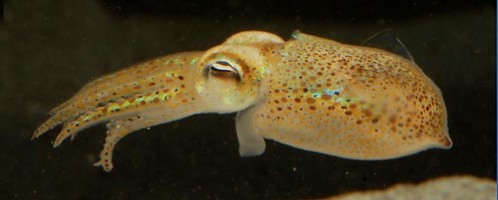
Sepiola atlantica swimming . © M. Rodrigues
Sepiola atlantica is a neritic species found in the eastern North Atlantic. It occurs in waters just below the intertidal zone to depths of 150 m but is most common below 50 m in Scottish waters but between 6 and 50 m in Galician waters of the Rìas (sheltered tectonic valleys of Spain) and prefers clean sandy bottoms (Guerra, 2012). It is primarily benthic but leaves the bottom to forage for food. Like most sepiolids, S. atlantica is a small species reaching a maximum of 25 mm ML in both sexes, although the average size of adults is 12-15 mm ML (Rodrigues et al, 2011).
Characteristics
- Arms (from Guerra, 1992 and 2012)
- Hectocotylus: Left arm I (dorsal arm).
- At proximal end of dorsal series, 3 slightly enlarged suckers with swollen pedicles, followed by 3-5 very small suckers with swollen pedicles, then 3-5 greatly enlarged suckers about midway out arm.
- Copulatory apparatus at base of hectocotylus with large swollen horn with secondary lobes basally.
- Hectocotylus strongly bent from middle towards mouth.
- At proximal end of dorsal series, 3 slightly enlarged suckers with swollen pedicles, followed by 3-5 very small suckers with swollen pedicles, then 3-5 greatly enlarged suckers about midway out arm.
- Tips of each arms IV with 4-8 series of minute suckers; proximal to tip, suckers in two series.
- Hectocotylus: Left arm I (dorsal arm).
- tentacles
- Tentacular club with 8 sucker series with suckers in dorsal series larger than those in ventral series.
- Tentacular club with 8 sucker series with suckers in dorsal series larger than those in ventral series.
- Head
- Beaks: Descriptions can be found here: Lower beak; upper beak.
- Integumental band of fusion between head and mantle 33-50% of head width.
- Photophores
- Photophores similar to those of most sepiolids with pair of bean-shaped reflectors backed by thin, ink sac; crypt containing luminescent bacteria deeper in viscera and between reflectors.
- Photophores similar to those of most sepiolids with pair of bean-shaped reflectors backed by thin, ink sac; crypt containing luminescent bacteria deeper in viscera and between reflectors.
- Gladius
- Reduced gladius present.
- Reduced gladius present.
- Viscera
- Bursa copulatrix in mature females relatively small, located on left side of mantle cavity, without expansion toward right side, and behind left nidamental gland.
- Bursa copulatrix in mature females relatively small, located on left side of mantle cavity, without expansion toward right side, and behind left nidamental gland.
Life History
- Mating (from Rodrigues, et al., 2009).
- The female seems to initiate mating by swimming in front of the male. The male grabs the female in the midventral region of her mantle then shifts to grasp the female's neck with the third arm pair and insert the dorsal arms into the female's mantle cavity. The left dorsal arm (hectocotylus) presumably passes the spermatophores to the female.
- The female seems to initiate mating by swimming in front of the male. The male grabs the female in the midventral region of her mantle then shifts to grasp the female's neck with the third arm pair and insert the dorsal arms into the female's mantle cavity. The left dorsal arm (hectocotylus) presumably passes the spermatophores to the female.
- Spawning (from Rodrigues et al, 2011)
- S. atlantica is a intermittent terminal spawner (ie, somatic growth growth of the female does not occur between spawning bouts) although the females feed between spawning bouts. Eggs are laid in batches of 31-115. The female dies within a day of spawning the final batch. Spawning period from first to last clutch spawned can be up to 20 days. Spawning occurs at night but the duration of the nighttime spawning event is unknown. Mature oocytes vary in size between about 2.7 and 3.8 mm roughly depending on the size of the female. Potential fecundity can be up to 304 and actual fecundity can be up to 111 eggs spawned.
- S. atlantica is a intermittent terminal spawner (ie, somatic growth growth of the female does not occur between spawning bouts) although the females feed between spawning bouts. Eggs are laid in batches of 31-115. The female dies within a day of spawning the final batch. Spawning period from first to last clutch spawned can be up to 20 days. Spawning occurs at night but the duration of the nighttime spawning event is unknown. Mature oocytes vary in size between about 2.7 and 3.8 mm roughly depending on the size of the female. Potential fecundity can be up to 304 and actual fecundity can be up to 111 eggs spawned.
- Young stages
- Hatchlings vary in size from about 1.1-1.7 mm ML (Rodrigues, et al., 2010). Hatchlings and juveniles are, in gereral, similar in appearance to adults except for relatively smaller arms and tentacles.
- Hatchlings vary in size from about 1.1-1.7 mm ML (Rodrigues, et al., 2010). Hatchlings and juveniles are, in gereral, similar in appearance to adults except for relatively smaller arms and tentacles.
Behavior
S. atlantica, like a number of other sepiolids, often buries itself in the sand during the daytime, with just the eyes slightly protruding or only the pupil of the eye exposed. The bobtail squid can bury itself in about 20 sec (Rodrigues, et al., 2010).
Distribution
S. atlantica is found throughout much of the Northeastern Atlantic from Iceland to Morocco (about 65°N - 35°N latitude (Rodrigues, et al., 2011) but is rarely found in the Mediterranean Sea (Cephstock ref).
References
Guerra, A. 1992. Mollusca, Cephalopoda. In: Ramos, MA et al., (eds). Fauna Ibérica, Vol1. Museo Nacional de Ciencias Naturales. CSIC. Madrid, 327 pp.
Guerra, A. 2012. CEPHSTOCK (Cephalopod Stocks in European Waters. Review, Analysis, Assessment and Sustainable Management). ICES Working Group on cephalopods. In press.
Jereb, P. and Roper, C.F.E. (Eds.) 2005. Cephalopod of the world. An annotated and illustrated catalogue of cephalopod species known to date. Vol 1. Chambered nautiluses and sepioids. FAO Species Catalogue for Fishery Purposes No 4, Vol. 1, Rome, FAO.
Rodrigues, M, Garci, M.E., Guerra A and Troncoso, J.S. 2009. Mating behaviour of the Atlantic bobtail squid Sepiola atlantica (Cephalopoda: Sepiolidae). Vie et Milieu, 59: 1-5.
Rodrigues, M., Garcě, M. E., Troncoso, J. S. and Guerra, A. 2011. Spawning strategy in Atlantic bobtail squid Sepiola atlantica (Cephalopoda: Sepiolidae). Helgoland Marine Research, 65: 43-49.
Rodrigues, M, Garcě, M.E., Troncoso, J.S. and Guerra, A. 2011. Seasonal abundance of the Atlantic bobtail squid Sepiola atlantica in Galician waters (NE Atlantic). Marine Biological Reseach, 7: 812-819.
Rodrigues, M. , Garcě, M. E., Troncoso, J. S. and Guerra, A.2010. Burying behaviour in the bobtail squid Sepiola atlantica (Cephalopoda: Sepiolidae), Italian Journal of Zoology, 77: 2, 247-251.
Rodrigues, M., Guerra, A., Troncoso, J. S. 2010. Embryonic phase and hatchling size in Atlantic bobtail squid Sepiola atlantica (Cephalopoda: Sepiolidae). 17th International Congress of UNITAS MALACOLOGICA. World Congress of Malacology 18-24 July 2010, Phuket, Thailand.
Title Illustrations

| Scientific Name | Sepiola atlantica |
|---|---|
| Reference | Guerra A. 1992. Mollusca, Cephalopoda. In: Ramos, MA et al., (eds). Fauna Ibérica, Vol1. Museo Nacional de Ciencias Naturales. CSIC. Madrid, 327 pp. |
| View | Dorsal |
| Copyright |
© Angel Guerra

|
About This Page
Angel Guerra

Instituto de Investigaciones Marinas (CSIC)
Correspondence regarding this page should be directed to Angel Guerra at
Page copyright © 2012 Angel Guerra
 Page: Tree of Life
Sepiola atlantica publication sometime between 1839-1842. Atlantic bobtail squid.
Authored by
Angel Guerra.
The TEXT of this page is licensed under the
Creative Commons Attribution-NonCommercial License - Version 3.0. Note that images and other media
featured on this page are each governed by their own license, and they may or may not be available
for reuse. Click on an image or a media link to access the media data window, which provides the
relevant licensing information. For the general terms and conditions of ToL material reuse and
redistribution, please see the Tree of Life Copyright
Policies.
Page: Tree of Life
Sepiola atlantica publication sometime between 1839-1842. Atlantic bobtail squid.
Authored by
Angel Guerra.
The TEXT of this page is licensed under the
Creative Commons Attribution-NonCommercial License - Version 3.0. Note that images and other media
featured on this page are each governed by their own license, and they may or may not be available
for reuse. Click on an image or a media link to access the media data window, which provides the
relevant licensing information. For the general terms and conditions of ToL material reuse and
redistribution, please see the Tree of Life Copyright
Policies.
- First online 06 March 2012
- Content changed 06 March 2012
Citing this page:
Guerra, Angel. 2012. Sepiola atlantica publication sometime between 1839-1842. Atlantic bobtail squid. Version 06 March 2012 (under construction). http://tolweb.org/Sepiola_atlantica/24019/2012.03.06 in The Tree of Life Web Project, http://tolweb.org/




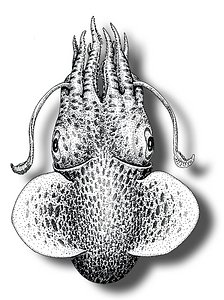
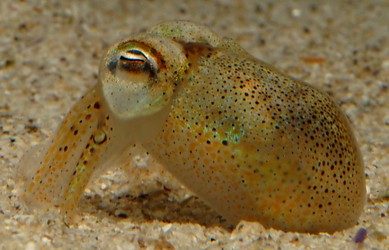

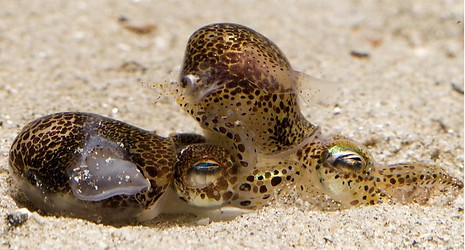
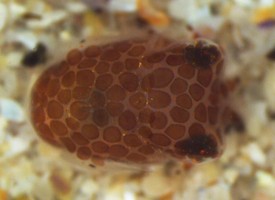
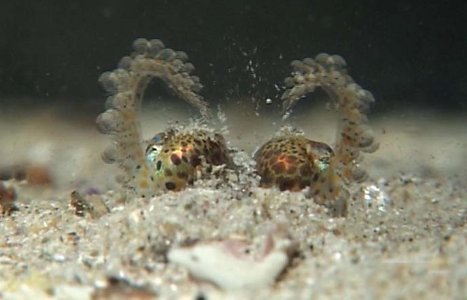
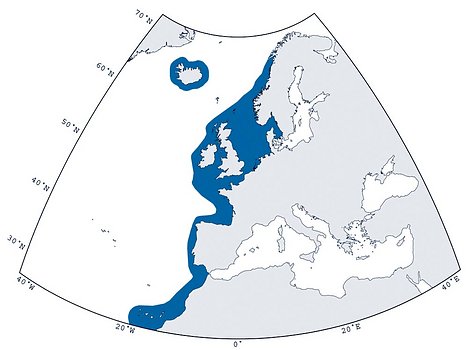



 Go to quick links
Go to quick search
Go to navigation for this section of the ToL site
Go to detailed links for the ToL site
Go to quick links
Go to quick search
Go to navigation for this section of the ToL site
Go to detailed links for the ToL site